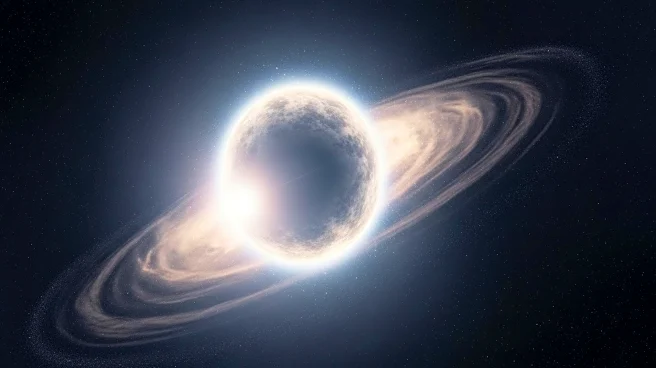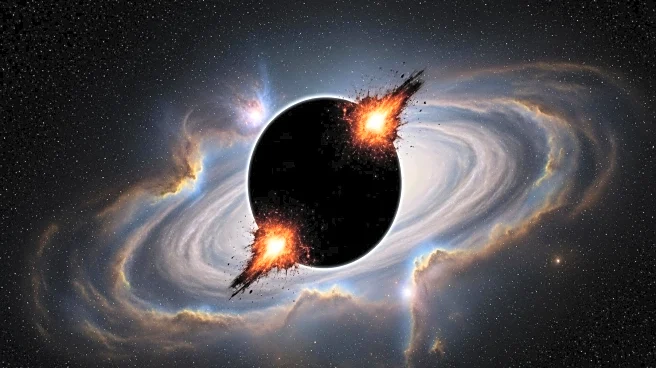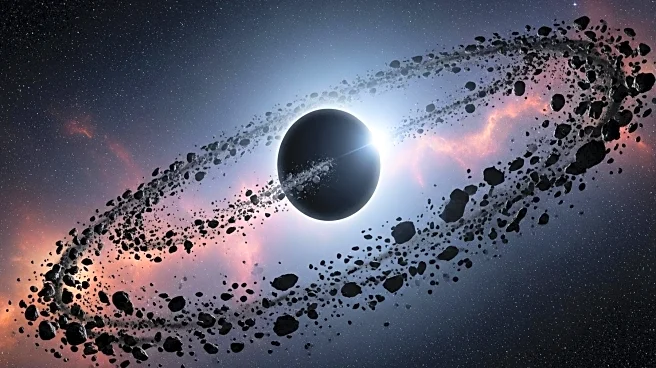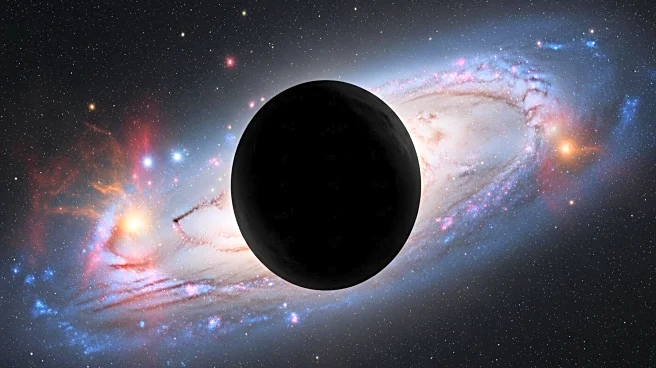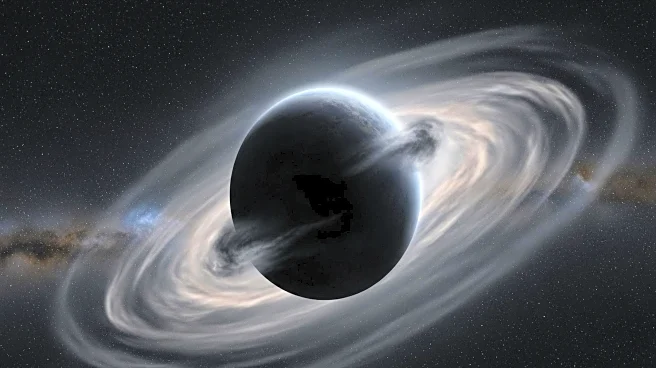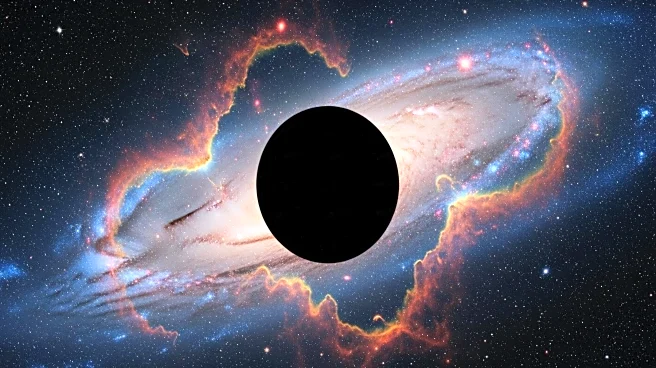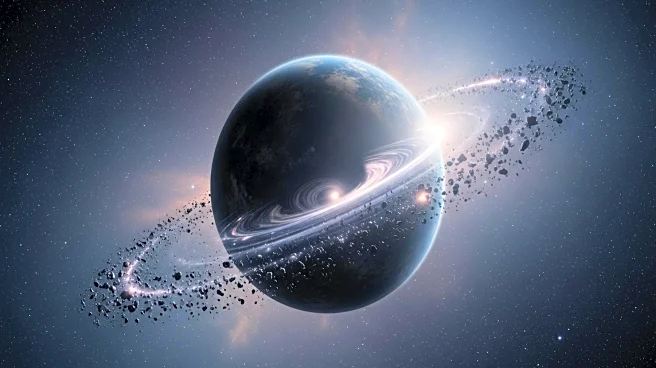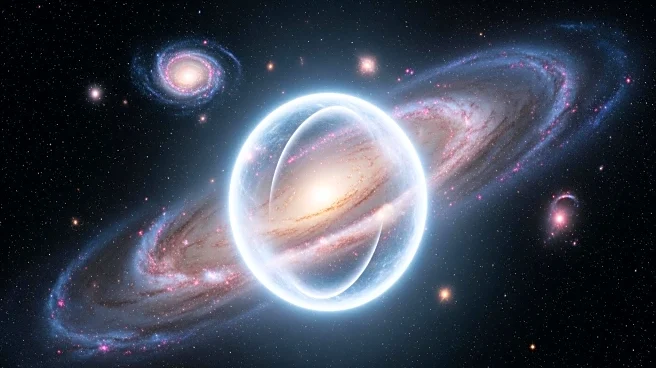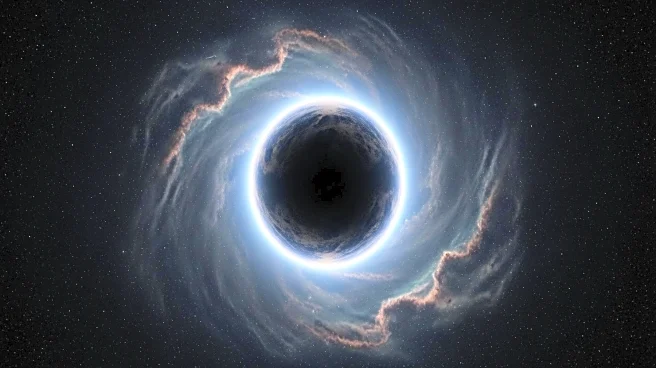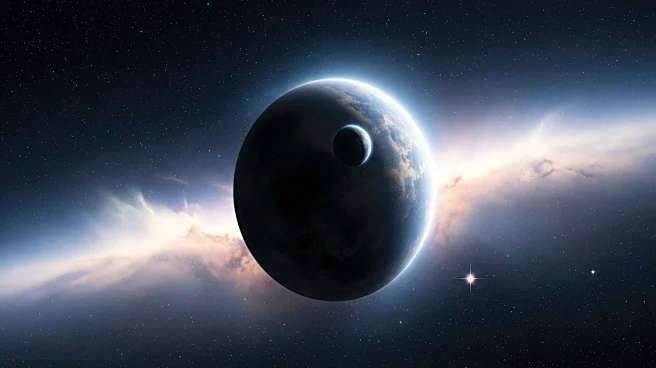What's Happening?
Astronomers have discovered a rogue planet, Cha 1107-7626, located approximately 620 light-years away in the Chameleon constellation. This planet is experiencing an unprecedented growth spurt, consuming gas and dust at a rate of 6 billion tons per second. The discovery, detailed in The Astrophysical Journal Letters, marks the strongest growth rate ever observed in a planetary body. The planet, still in its early formation, is feeding off a surrounding disc of gas and dust, remnants from its birthing process. Observations indicate that its accretion rate increased significantly by August, attributed to its magnetic activity.
Why It's Important?
The discovery of Cha 1107-7626 challenges existing understanding of planetary formation and behavior. Its rapid growth and magnetic activity suggest that planetary-mass objects can exhibit star-like characteristics, potentially altering theories about planet formation and evolution. This finding could have implications for the study of other rogue planets and the processes that govern their development. The presence of water vapor during accretion also opens new avenues for research into the chemical processes occurring in such environments.
Beyond the Headlines
The behavior of Cha 1107-7626 raises questions about the potential for other rogue planets to exhibit similar characteristics. The discovery that a planetary object can behave like a star invites further exploration into the diversity of planetary systems and the conditions that lead to such phenomena. This could lead to a reevaluation of the criteria used to classify celestial bodies and their potential for hosting life.

